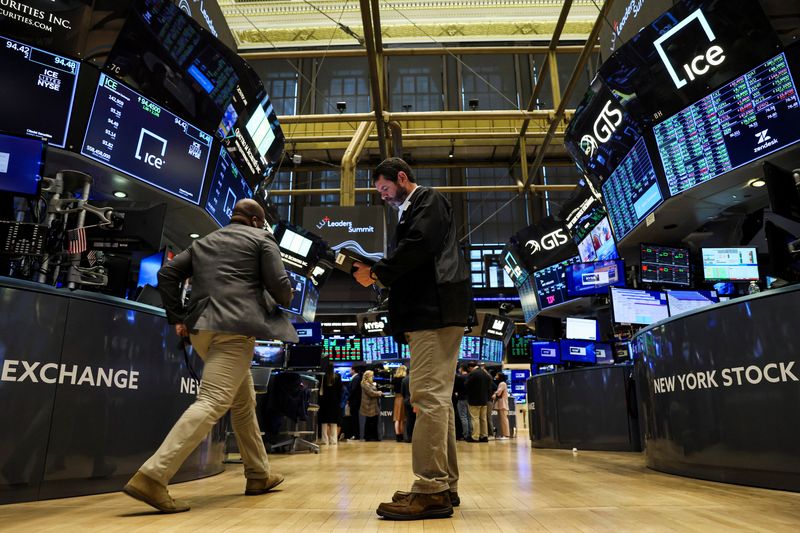By Samuel Indyk
LONDON (Reuters) - Fund managers' allocation to U.S. equities collapsed in January, with 39% saying they had an underweight position, the most since October 2005, a BofA survey of global investor views on Tuesday showed.
Global growth optimism hit a one-year high, while inflation expectations have peaked, according to the global Fund Manager Survey of investors, who have combined assets under management of $772 billion.
The survey showed investors turned bullish on euro zone equities, flipping their allocation to a 4% net overweight in January from a 10% net underweight in December.
Fund managers also moved into emerging market stocks, increasing their net overweight to 26%, the highest since June 2021.
European shares have outperformed their U.S. counterparts since the start of the fourth quarter of 2022 as the region's growth outlook improved on hopes that China reopening its economy will provide a boost and as natural gas prices plunged because milder weather helped replenish stockpiles.
Data also signalled a slowdown in inflation in the euro zone and the United States, which is expected to allow central banks to further slow their pace of tightening this year.
The pan-European STOXX 600 is up almost 20% from its October low and about 8% below its all-time high reached in the first quarter of 2022.
Meanwhile the S&P 500, the U.S. benchmark is up around 13% from its October trough and remains almost 17% below its record high.
The survey also showed yen appreciation expectations at their highest level since January 2007, the month before the Bank of Japan last raised its base interest rate. The BoJ meets on Wednesday and expectations have risen that the central bank could soon change its interest policy.

Recession fears have faded on hopes that China's reopening from some of the world's strictest measures to contain COVID-19 will provide a boost to global growth this year, with expectations for growth in China hitting a 17-year high, according to the fund managers.
The survey also showed inflation staying high as the biggest "tail risk" and the top "contrarian trades" as being 'long' stocks, U.S. stocks and tech versus 'short' bonds, emerging market stocks and utilities.